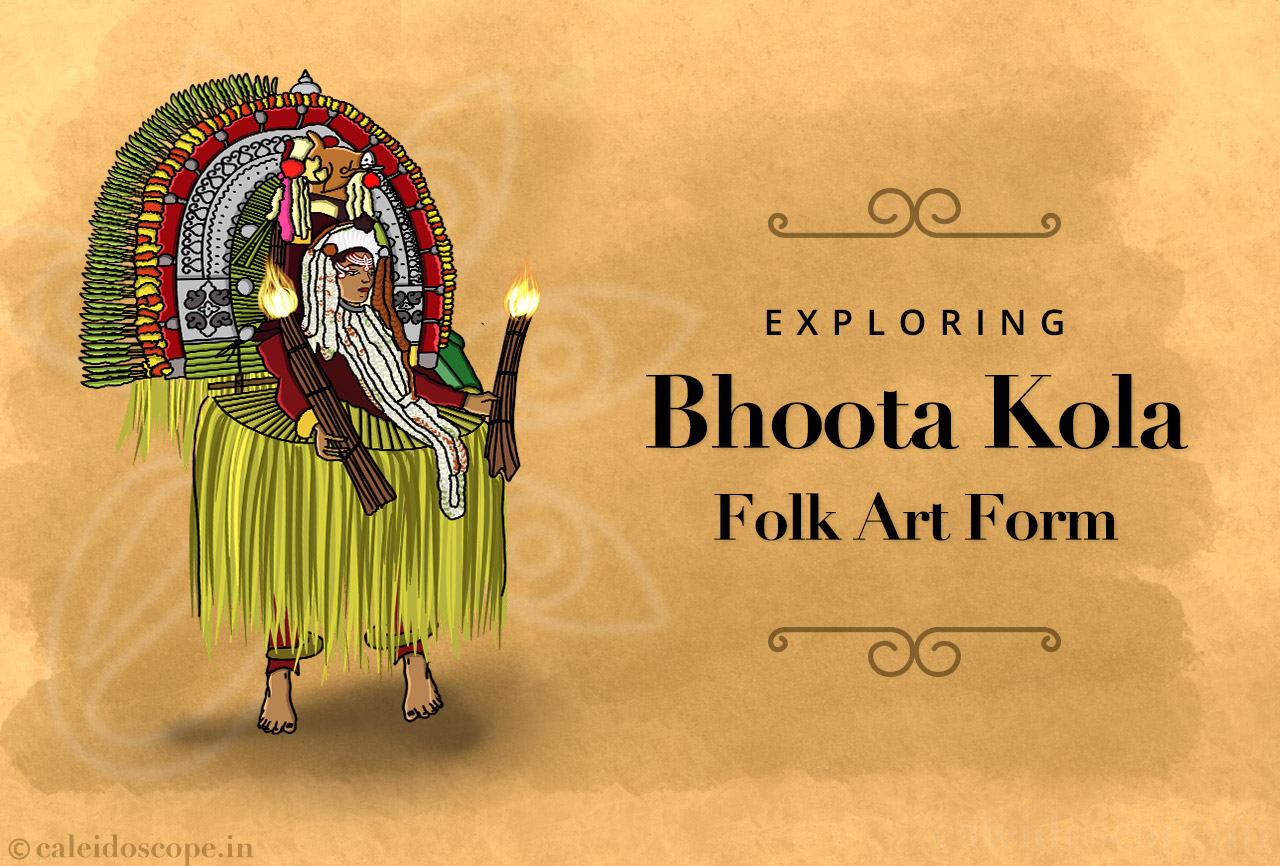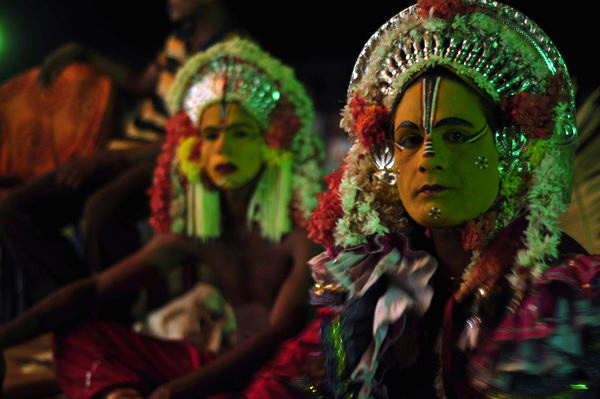
My recent visit to Mangalore in Karnataka was quite different. Well, it was more like a travel back into medieval times. It was much more different than those times when I would visit the place and just go the beaches and feast on the seafood delicacies with my friends. This time I made sure that I will explore the folk art & cultural aspects of Mangalore.
The coastal region of Tulu Nadu, which stretches beyond to the city of Mangalore, has a lot of cultural and historical value imbibed in its traditional beliefs and rituals. There are several religious connections in this culturally diverse area and it extends from the border of Kerala up to Kundapura. Beyond Kundapura, one can find the Konkan culture, which is slightly different. This 150 km coastal stretch is filled with several cultural and religious sites, which make way for colourful and joyous celebrations during Hindu festivals. Among these the most significant ritual that I experienced was the Bhoota Kola.

“Bhoota Kola” or “Bhuta Kola” is a ritualistic theatre form that worships the lesser-known demons and spirits, who largely represent the religious sentiments and culture of the pious people of Tulu Nadu. Besides, this folk art form also acts as a forum for social connection and builds a vibrant community life in general. This practice of spirit worshipping is seen mainly in and around Dakshina Kannada district in Karnataka.
I visited this place with my close friend from the area, whose family had organized the ritual. It was quite unusual because she invited me in the late evening and I learnt that the Bhoota Kola ritual is mostly set in the background of the night. Most of the spectators actually stay until early morning, where the Kola dance reaches its final juncture.

The ritual includes elaborate face painting, folk costumes, drum based music and the area is lit up with the light from the burning bonfire, which gives the ritual a touch of mysticism and visual appeal. People’s belief in these spirits further adds credence to this religious art form. People believe the spirit talks to them through the impersonator and protects them.

There are different types of spirits or ‘Daivas’ as the people call them, some of them are of totemic origin; some others are of Brahminic origin. They mainly depict the fiery attendants of Lord Shiva and Goddess Shakthi (Ganas). Each Daiva has human related origin wherein heroes of the region who attained martyrdom fighting in the region are deified. Each spirit has a distinct story, background, physical representation, performance and music. Offerings to these spirits again differ; Puranic spirits are offered flowers, rice, bananas, whereas the tribal spirits are offered liquor and meat. Meat of the rooster is usually sacrificed by the impersonator.

The Bhoota Kola worship has different forms of spirits: Bhuta, Preta, Daiva, Kule, Sirikulu, etc. Many of these deities have been gradually incorporated from Vedic myths, which got recomposed into Paadanas. These Paadanas are songs that are composed and sung when the performance begins. The elements of these rituals, costumes complete with a sword, bells and other accessories, high pitched song and music, burning of torches, leaping over burning coal etc, creates a massive psychological effect among believers. It was a gripping experience for me as well.

The Daiva’s face painting creates a vivid visual appeal. The vibrant colours and body curves are so arranged to give a mysterious look. There is a lot of intricate detailing done in the face painting. The eyes of the performer are painted black. Apart from the elegance that it gives to the whole face; black also symbolizes mystery and fear. It also helps in hiding the features of the eye as it is easy to identify the dancers through their eyes. So when these Daiva impersonators look at themselves, they cannot identify themselves. They would have a different face altogether with the features of the makeup adding to it get up. The rest of the face is painted red or orange. Red is a stimulating color that is associated with energy and it instantaneously grabs the viewers’ attention. The significance of the colours used in the Ritual is truly fascinating. The Daiva impersonators are this way slowly prepared for self-hypnotism for imposing the spirits on them.

Even in the modern age ruled by technology, Bhoota Aradhane continues to hold sway over Tulu Nadu as it has done for centuries. As an art form, tradition, entertainment and psycho-cultural phenomenon, spirit worship stands as a grand example of man’s longing for an intimate connection with nature. Globalization and rapid modernization have not changed the instincts of Bhoota Kola, it still remains an intimate part of the life of the people in Tulu Nadu. And to me, it was like I said in the beginning; a very different experience of Mangalore altogether.
Author – Nischitha Sharath
Factfile –
http://www.demotix.com/news/1741199/bhuta-kola-spirit-worship-performed-udupi
http://www.deccanherald.com/content/70064/connecting-nature.html
http://tulunadakale.weebly.com/tulundad-daiva.html
http://mytulunadu.wordpress.com/traditions/






this is very useful and new information thank u
Thank you Kalki 🙂
When this butha kola will start at which date
Hi Kamesh, I don’t think so there is predefined dates for these events, basically the community with different families of the village come together to organise these events and a date is decided to perform before months since it takes a lot of preparation before the event. But they make sure to send the invitation to the concerned people much in advance. thanks!